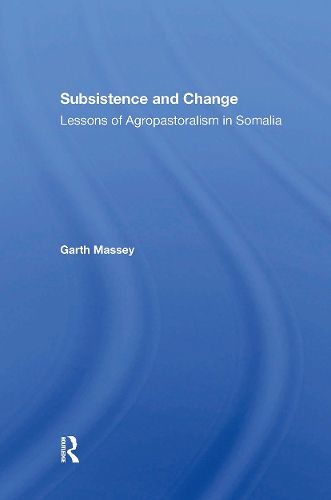Readings Newsletter
Become a Readings Member to make your shopping experience even easier.
Sign in or sign up for free!
You’re not far away from qualifying for FREE standard shipping within Australia
You’ve qualified for FREE standard shipping within Australia
The cart is loading…






Focusing on an agropastoral society of southcentral Somalia, this book explores the seeming incompatibility of subsistence agriculture and development goals. Based upon survey and ethnographic research carried out among the Rahanweyn, the study pays particular attention to economic activities, linking them with environmental factors as well as with history, culture, the division of labor and women's roles, family structure, demography, and herding and agriculture. How change can best be introduced into such a society is the central question of the book. The meaning of subsistence and its relationship to self-sufficiency and a survival threshold are examined within the context of an externally imposed market system. The implications of rapidly induced market involvement in a traditional society are looked at in light of data on a range of subsistence societies. The author argues for a redirection of development practices, making a case for the viability of a mixed agropastoral system that diverges little from the traditional subsistence patterns, and for peasant-centered development compatible with subsistence production, balancing national and international interests.
$9.00 standard shipping within Australia
FREE standard shipping within Australia for orders over $100.00
Express & International shipping calculated at checkout
Focusing on an agropastoral society of southcentral Somalia, this book explores the seeming incompatibility of subsistence agriculture and development goals. Based upon survey and ethnographic research carried out among the Rahanweyn, the study pays particular attention to economic activities, linking them with environmental factors as well as with history, culture, the division of labor and women's roles, family structure, demography, and herding and agriculture. How change can best be introduced into such a society is the central question of the book. The meaning of subsistence and its relationship to self-sufficiency and a survival threshold are examined within the context of an externally imposed market system. The implications of rapidly induced market involvement in a traditional society are looked at in light of data on a range of subsistence societies. The author argues for a redirection of development practices, making a case for the viability of a mixed agropastoral system that diverges little from the traditional subsistence patterns, and for peasant-centered development compatible with subsistence production, balancing national and international interests.